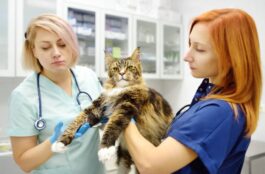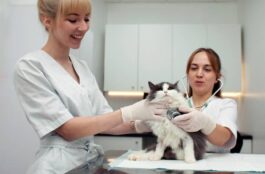
Like humans, pets suffer from conditions requiring immediate care, which can happen anytime – night or day, and on holidays. Sometimes, this is not easy to know, especially if it’s your first time owning a pet. While some signs like bleeding or fall alarm owners to take their pets into an emergency animal hospital right away, some life-threatening conditions don’t show such manifestations.
It would be impossible to mention all signs and conditions because the list would be extensive. However, below is a summary of the most common signs that your pets need to see a veterinarian immediately. Additionally, keep in mind that even if they don’t show these signs if your pets behave strangely, it is always best to contact the experts like Falls Road Animal Hospital because they know better. Click this link to learn more about animal emergencies.
Indications of a Pet Emergency
- Vomiting or diarrhea with blood
- Uncontrolled bleeding
- Obvious pain
- Loss of balance
- Inability to walk
- Dilated pupils
- Seizures
- Unconsciousness
- Pregnant females unable to deliver
- Difficulty breathing and extreme choking or coughing
- Ingestion of poisonous foods, plants, chemicals, or bones
- Severe injury ( broken bones, car accidents, falls, open wounds)
Basic First Aid for Pets
Though First Aid is not intended to replace professional care, there are times when you need to stabilize your pets on your way to an emergency veterinarian or animal hospital. Also, these are useful during emergency cases like road accidents or poisoning. That is why as a pet owner, you have to keep a First Aid kit in your house or car to help you to handle critical situations like these.
Your kit should contain:
- Gloves and tweezers
- Gauze pads and bandages
- Medical tape
- Swabs
- Scissors
- Alcohol wipes
- Saline eye solution
- Ice pack
- Styptic powder (suitable for nail breaks)
- Washcloths/towels
1. Seizures
Remove all objects that can damage your pets. Avoid touching or restraining them since these can prolong seizures, and do not put anything in their mouth. After the seizure is over, they could be disoriented for up to 2 hours and quite thirsty, so ensure to prepare drinking water. If possible, pay attention to when the seizure began and ended because this can help the vet with their diagnosis. Most importantly, call the vet.
2. Bleeding
Regardless of what the cause is, the objective of first aid is to control blood loss. As you can not do much about internal bleeding, controlling external bleeding will help a great deal while on your way to the vet. To begin with, muzzle your pet. Put a fresh gauze pad above the harm while applying pressure with your hand until blood clotting starts, usually after a few minutes. In case of leg bleeding, it requires a gauze tourniquet and an elastic band to secure it. Bring your pet to the vet immediately.
3. Fractures
Like bleeding, you have to muzzle your pet first. Lay them on a level surface, which may also serve as a stretcher for transporting to an animal hospital or clinic. Secure your pet to the stretcher, avoiding the wounded area. Don’t attempt to splint the limb and move it as little as possible. Transfer them quickly and comfortably as possible.
4. Choking
In case of choking, be cautious because your pet may bite out of panic. Look for an object in their mouth and try eliminating it as carefully as possible, avoiding pushing it further into the throat. If you think this is difficult to do, do not waste time looking for ways how. Instead, take your pet to an animal hospital or clinic immediately.
If you’re looking for pet grooming Baltimore experts, Falls Road Animal Hospital is your go-to vet. They are a full-service animal hospital with multi-practice friendly veterinarians. Click here to know why you should trust them.


